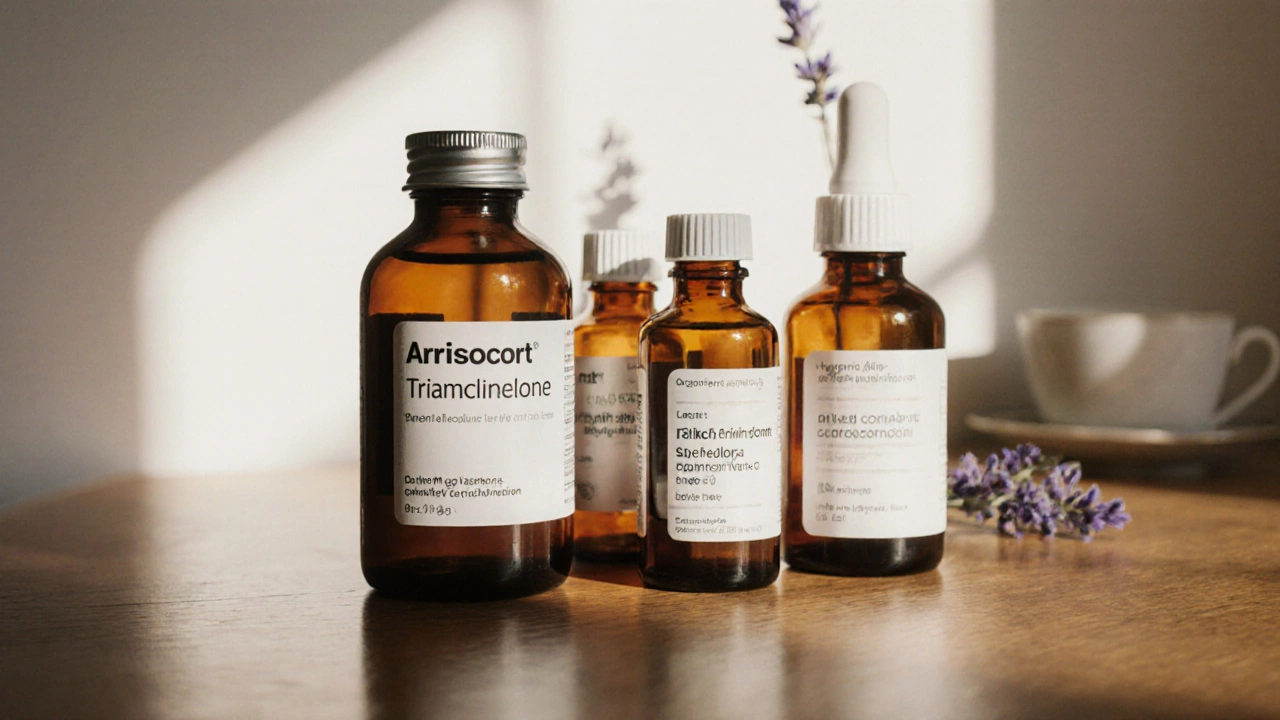A clear, side‑by‑side look at Aristocort (triamcinolone) versus other corticosteroids, covering potency, uses, cost, safety and real‑world tips.
Ever stared at a shelf of steroid creams and wondered which one actually works for you? You’re not alone. Topical steroids come in a huge range of strengths, brands, and formulations, and a wrong pick can mean wasted money or unwanted side effects. This guide breaks down the most important factors so you can compare them quickly and safely.
First thing to check is the potency label. In the U.S. steroids are grouped from Class I (super‑strong) to Class VII (mild). A common rule of thumb: milder classes are best for facial eczema or sensitive areas, while higher classes are reserved for thick plaques or scalp psoriasis. Look at the active ingredient – hydrocortisone, betamethasone, clobetasol, etc. – and match it to the class number printed on the label or in the insert.
Next, think about the vehicle. Creams, ointments, gels, and lotions each deliver the drug differently. Ointments stay on the skin longest, making them ideal for dry, scaly patches. Gels dry fast and feel less greasy, so they’re popular for oily or acne‑prone zones. If you need a quick‑dry option for the hands, a lotion can be a good compromise.
Don’t forget the prescription status. Some lower‑potency steroids (like 1% hydrocortisone) are over‑the‑counter, while mid‑range and high‑potency versions require a doctor’s script. This isn’t just a legal hurdle – it’s a safety net that ensures you get the right strength for your condition.
Side effects usually appear when you use a strong steroid for too long or on thin skin. Look out for thinning, stretch marks, or easy bruising. If you notice any of these, cut back the usage or switch to a lower potency. Always follow the “finger‑tip” rule: a thin layer the size of a fingertip covers an area about the size of your palm.
Another red flag is applying steroids under occlusion (covered with a bandage) without medical advice. While occlusion can boost absorption, it also ramps up the risk of systemic effects, especially with high‑potency drugs.
When you’re comparing two products, write down three quick points: potency class, vehicle type, and prescription requirement. Then rank them based on your skin type and the area you need to treat. This simple table‑style comparison helps you see the best match at a glance.
Finally, keep a short diary. Note the brand, how often you apply it, and any changes in redness, itching, or skin texture. A few weeks of notes can reveal whether the steroid is doing its job or if you need to switch to a different strength.
Bottom line: don’t pick a steroid based on price alone. A cheaper, weaker cream might leave your rash unchanged, while an overly strong one can cause long‑term damage. Use the potency class, vehicle, and safety cues as your checklist, and you’ll land on the right product faster than you thought possible.

A clear, side‑by‑side look at Aristocort (triamcinolone) versus other corticosteroids, covering potency, uses, cost, safety and real‑world tips.